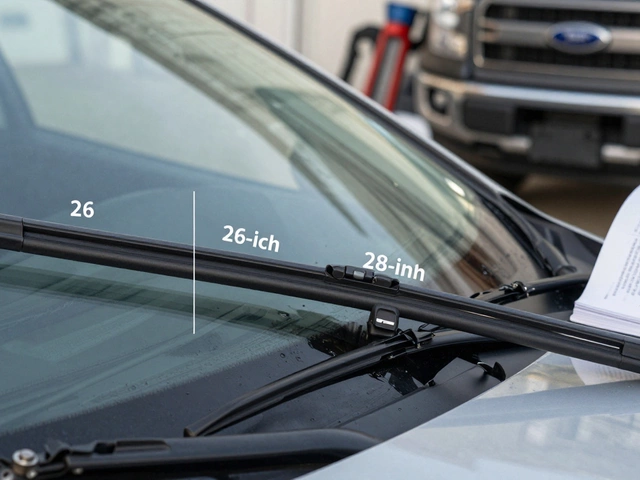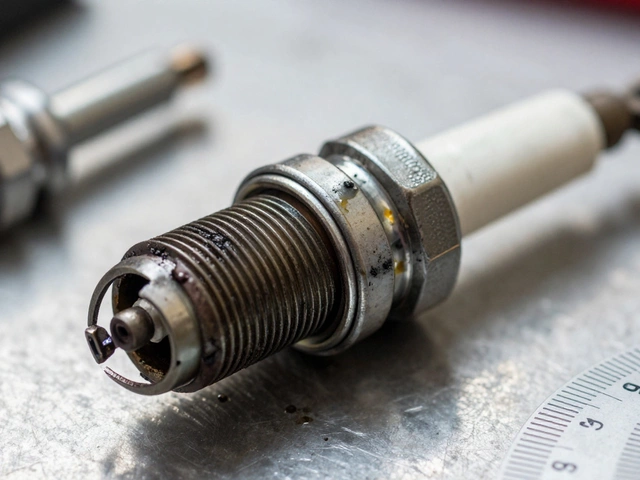If you think an old radiator is just another car part quietly getting on with its job, think again. Hidden behind the grille, a 20-year-old radiator can be a ticking time bomb for anyone who relies on their car to get them to work, road trips, or even just out for coffee on a Sunday morning. There’s a reason why mechanics lose sleep when they see a corroded radiator in a twenty-year-old sedan and not just because it means they get a quick payday. The hidden damage, the gradual loss of efficiency, and the sudden—expensive—failures catch owners off-guard when it’s hottest or farthest from help. Not every ancient radiator will self-destruct at midnight, but if you’re riding with a two-decade veteran, reach for a flashlight and get ready for a reality check.
What Actually Happens to Radiators Over 20 Years?
Radiators are nothing like a fine whisky—they do not improve with age. After 20 years, these metal and plastic coolers have taken a beating from hot-and-cold cycles, road grime, leaks, and corrosion. The really sneaky part? Most of this wear happens from the inside out. That small drip you ignored? It’s probably traced to degraded gaskets or pinhole corrosion in the core. Every heating and cooling cycle wears the metal thinner. Instead of moving coolant efficiently, a worn radiator starts to clog with mineral buildup, slowing flow and raising engine temps.
Let’s talk facts. According to a 2023 survey by AAA, cars over 15 years old are twice as likely to suffer cooling system failures, with radiators and hoses at the top of the problem list. That means by 20 years, your radiator’s one unfortunate pothole or rough winter away from giving up. And the signs are subtle—maybe your temperature gauge creeps up in traffic, or you find yourself topping off coolant more often without a visible leak on the ground. Those are red flags, not mere quirks of old age.
But it’s not just the main body of the radiator that gets battered. The plastic end tanks (on most modern radiators) become brittle. The solder joints (on older brass-and-copper units) start leaking. Long story short: even if it’s never been touched, a 20-year-old radiator is living on borrowed time.
Consider cars like the Toyota Camry from 2005 or a Honda Accord from the same era. Plenty still run perfectly, but a surprising number of their original radiators fail without warning between years 15 and 22. It’s never “just” a radiator either—if it bursts, you’re risking a cooked engine and, suddenly, a repair bill that dwarfs the cost of a new radiator by tenfold.
Let’s see what the average radiator lifespan and failure rate looks like with real data:
| Radiator Age (Years) | Average Failure Rate (%) |
|---|---|
| 5 | 2 |
| 10 | 8 |
| 15 | 19 |
| 20 | 42 |
| 25 | 76 |
That jump between years 15 and 20 isn’t theoretical. By the time a radiator is two decades old, nearly half will have already failed. And almost no radiators remain leak-free at 25 years, even with perfect coolant changes. The odds just aren’t in your favor for pushing it further.
Are There Clear Warnings Before Failure?
The sad part? Radiators rarely go quietly. If you know how to spot the signs, you can avoid a meltdown on the way to your next appointment. The first giveaway is overheating. But here’s the twist: modern cooling systems compensate surprisingly well until they just… don’t. On a 20-year-old radiator, the first clue might be a needle sitting a tick higher on hot days or after a long idle at a drive-thru—just enough to notice, never enough to scream “replace me now.”
Other signs? Coolant residue around the filler cap or on the radiator seams. That strange, sweet smell? Leaking coolant usually leaves a trail if you look close at the core, hoses, or even the undertray. Another hint: old radiators often develop rust or soft spots you can feel if you press lightly (don’t jab too hard or you might finish the job!).
If you aren’t checking, that “top-off” routine becomes more frequent, but there’s rarely a dramatic puddle. Most leaks are slow, and the coolant burns off while driving. For cars with aluminum radiators, internal corrosion can turn the coolant brown or orange—never a good sign. If you pull off a radiator cap and see gunk or sludge, that’s your queue: things aren’t flowing as they should.
Listen, here’s a tip: check the radiator fins for bent or crumbling spots. On really old radiators, you might notice cracking plastic tanks or crusty deposits where the hose clamps attach. That’s not just cosmetic. One good bump or engine bay heat cycle, and you could blow a seam wide open.
One quick test: after running your car until warm, feel for cold spots on the radiator core (with the engine off, of course). Cold patches mean blocked passages, dropping cooling power and raising the risk of catastrophic overheats. That’s not the kind of risk you want to roll the dice on.
When drivers get stranded on a hot day with steam pouring out—and believe me, tow truck drivers see this all summer long—nine times out of ten, an old radiator was involved. The warning signs were there, just hidden behind a comfortable routine of “it’s always run fine.”

The True Costs: Replace or Hang On?
Now let’s talk money, because that’s usually what convinces people to tackle a big job like a radiator swap. It’s easy to look at an old car and think, “Is it really worth spending $250-$700 for a part just to keep a beater on the road?” That’s a fair question. But stack those numbers against the price of a tow, a possible blown head gasket, or (worst-case) a dead engine, and the math flips fast.
Here’s a breakdown of average radiator replacement costs in 2025 (for common models, parts plus labor):
| Vehicle | Part Cost ($) | Labor Cost ($) | Total ($) |
|---|---|---|---|
| Honda Accord (2005) | 130 | 210 | 340 |
| Toyota Camry (2005) | 125 | 200 | 325 |
| Ford F-150 (2005) | 180 | 250 | 430 |
| BMW 3 Series (2005) | 340 | 430 | 770 |
DIYers can cut labor costs by half (or more), but you do need basic know-how. On the other hand, putting off replacement “to save money” can be dangerous. A single overheat can fry a head gasket ($1500+ repair minimum), warp a cylinder head, or even bust the block. Suddenly, that $400 radiator job looks like a bargain.
Don’t overlook less obvious costs, either. A struggling radiator reduces fuel economy, especially with fans running more often and the engine control module dialing back power. And if a leak sprays coolant everywhere, you can count on replacing the serpentine belt, a handful of sensors, or even the alternator if things get messy enough.
Here’s an underrated hack: if your cooling system is spotless, replacement is less urgent. But let’s be real—very few 20-year-old cars have perfect service histories. Most folks buy coolant “top-ups” at the gas station, mix brands, or let flushes slide for years. That all adds up, making failure more likely and replacement the smarter long-term play.
Treating a radiator as a “consumable” after two decades stops a lot of headaches. Sure, you’ll shell out for the new part, but the peace of mind on a road trip or crawling in traffic is worth plenty too. Now, if your car is a classic you never drive, maybe you can risk it—it just depends how lucky you feel or how far you ever get from home.
How to Stretch Your Investment (If You Must Wait)
Let’s say you checked your savings and replacing the radiator isn’t happening yet. There are smart, practical moves you can make to keep things running safer in the meantime (assuming it’s not leaking already). Start with a total coolant flush. Old coolant turns acidic, which kills radiators faster. Run distilled water with a cleaner, drain it twice, then refill with the right premix. Never top off with plain water! It dilutes corrosion inhibitors, setting up more decay inside the core.
Next, check hoses for any swelling, cracks, or bulging—the weakest link will fail first. Tighten all clamps, and install new pressure caps if yours looks tired. These fix minor pressure loss that can lead to slow leaks.
You should also gently straighten any bent radiator fins with a plastic comb or small tool, improving airflow. Clean out bugs, leaves, and debris blocking the core—anything that makes fans work harder is bad news. Watch the gauge religiously, especially in traffic or up steep hills. If overheating happens, shut down immediately. Limping home on a hot engine is a surefire path to disaster.
If your end tanks (those plastic bits on either side) are turning yellow or cracking, don’t ignore them. You can find “radiator repair kits” at most parts stores for under $15, and while they aren’t a forever solution, they’ll patch a slow leak until you can afford a real fix.
For anyone holding out, set a savings plan aside for a replacement—it’s just smart budgeting. Watch for deals online (rockauto.com always seems to have solid prices), and consider upgrading to an all-aluminum unit if you plan to keep the car years longer. These often last longer than OEM plastic-tanked versions and only cost about 30% more up front.
- Flush coolant every 2 years or 30,000 miles (whichever comes first).
- Replace the radiator cap along with the radiator to guarantee pressure integrity.
- Never ignore even the smallest leak; a pinhole today is a geyser tomorrow.
- Use only approved coolant types—mixing green, orange, and "universal" coolants is a recipe for sludge.
- Install a simple infrared temp gauge ($20 online) to catch hidden hot spots before the dash gauge ever moves.
If any shop tries to upsell you on unnecessary repairs once you’re in for a radiator, ask to see the evidence. A radiator replacement *should* be straightforward for any model without turbo plumbing or exotic parts. Watch those labor times—they love to pad the bill, especially on older mainstream cars. If you’re handy, swapping a radiator can be a morning’s work with a basic socket set and YouTube for backup.
Most important: trust your gut. You know your car’s quirks. If things suddenly feel off—whether it’s rising temps, weird smells, or just a sneaky hunch—don’t wait for the smoking gun. With 20 years of service, even the most reliable radiator has paid its dues.








